|
11. Pyrgus alveus (Hübner, 1803) / Large grizzled skipper / Hesperiidae – Pyrginae
NL: grote puzzeldikkop, groot spikkeldikkopje / D: Halbwürfefalter, Sonnenröschen-Würfelfalter / F: hespérie du faux-buis, plain-chant
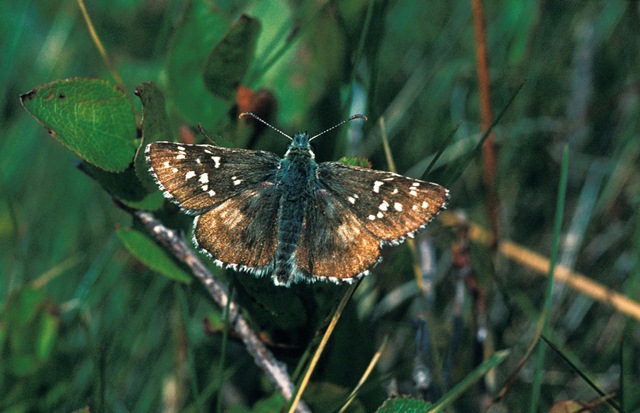 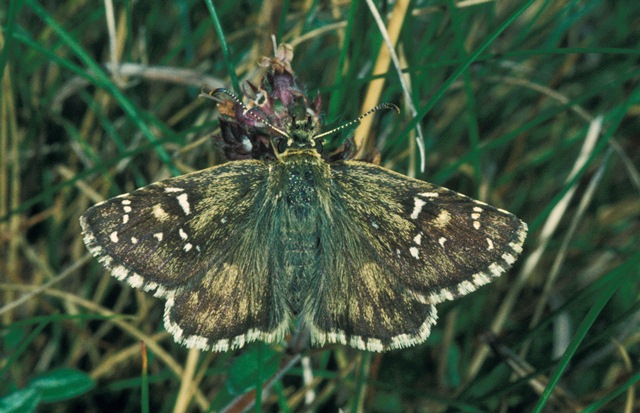 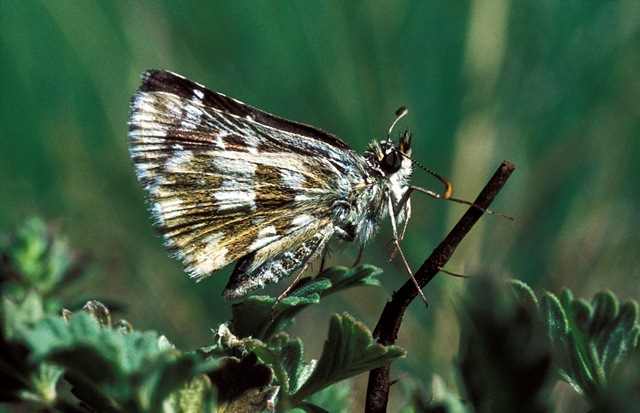
Photographs: Frits Bink ©.
Small, wing length 14 (13-15) mm. The species is very difficult to distinguish in the field from related species, however there are some features which may help to separate it from its most similar species Pyrgus trebevicensis Warren 1926. The latter is on the wing early in the summer, whereas P. alveus is a late summer species, of which males exhibit hill topping behaviour. In the Benelux, it used to occur on a few sites in Luxemburg and Wallonia.
It is on the wing from mid-July until late-August and occurs in continental climates, amplitude 8-20. The required heat sum is 400°d and the tolerated maximum 900°d, corresponding with climate windows of 19 weeks and 26 weeks.
The species occurs in hilly and mountainous landscapes, with hill tops having patches of bare ground or large stones.
Ecological characteristics
Behaviour over time
Overwintering: small larva in second instar, hidden between leaflets spun together at the top of a twig.
Reproduction: oviposition starts after 9-12 days when the body contains 46 (34-57) eggs. Estimated potential reproduction 1.5 times as much.
Larval feeding periods: summer and autumn 36 (27-45) days from early-August until late-October, followed by 92 (81-103) days in next spring and summer from end-March until end-July.
Generations: always one.
Spreading of risk: not observed.
Life cycle: egg 15 (14-17) days; larva 43-47 weeks; pupa 20 (14-26) days.
Life span of adult: rather long, 3 weeks.
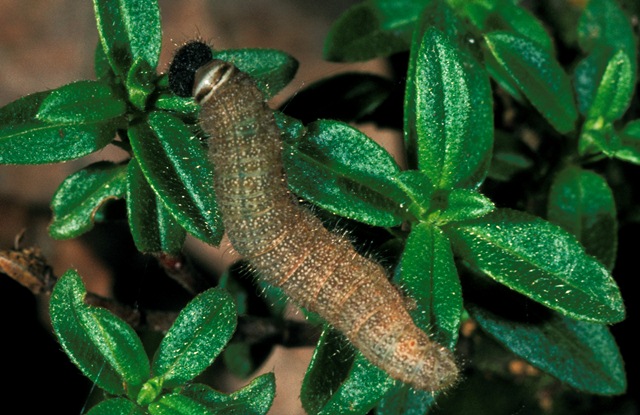 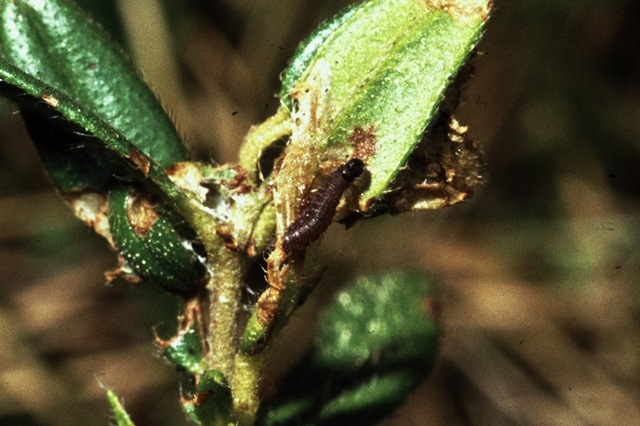
Photographs: Frits Bink ©.
Behaviour in space
From stay-at-home to migrant: stay-at-home, spatial requirement large.
Finding a mate: hill topping behaviour of the males where each male perches and displays a territorial behaviour over an area of at least 500m².
Orientation in the landscape: males choose distinct places on a hill top, females on short vegetation with patches of bare soil.
Oviposition: on underside of a leaf on an exposed plant in a short vegetation.
Defence
Threats from other organisms: larva lives hidden between folded leaves.
Threats from the environment: observation in the field indicates that both larva and adult can endure unfavourable weather.
Feeding habits
Adult: nectar of all kinds of flowers, especially thyme.
Larva: when young, larvae prefer young leaves. When older, old leaves are accepted.
Larval foodplants
Plant species: Cistaceae; Helianthemum nummularium was preferred in rearing experiment, but there is strong evidence that Potentilla species (Rosaceae) are the hosts in other places (Thust, Kuna & Rommel 2006: 25-28).
Journal
Rearing experiment based on specimen from Le Steinberg, France, altitude 1150m:
21 August 1984: two females captured.
26 August: started egg laying.
9 September: first egg hatched.
18 September: larvae now at end of L1, preferred very young leaves of Helianthemum, a few ate a little Potentilla.
22 September: larvae in moult L1-2.
30 September: all larvae in L2 constructed a more solid shelter for overwintering.
6 October: larvae were about 6 mm in size and red-brown in colour, appeared to be in diapause
1 November: all larvae in diapause
Overwintered outdoors
7 March 1985: taken indoors
11 March: all larvae active. Larvae rested on the underside of the leaves but ate the parenchyma of the upper side.
6 April: first larva in L3.
4 May: larvae in L4.
18 May: larvae nearly full grown.
3 June: one larva pupated and three prepupa.
6 June: five pupae seen.
12 June: last larvae preparing to pupate.
21 June: first adult appeared, male.
30 June: first female appeared.
11 July: last three pupae hatched, all female.
Table 11-1. Results of dissections

Table 11-2. Collection and observation localities
D, Kaiserstuhl, Badberg 433 m, 48° 05’ 47”N – 7° 40’ 40”E; 9 July 1985.
F, Vosges, le Steinberg 1150 m, 47° 59’ 27”N – 7° 06’ 40”E; 21 August 1984.
F, Vosges, le Zinnkoepfle 481 m, 47° 57’ 56”N – 7° 15’ 08”E; 10 July 1984 (dissections 26-7-84).
Fig. 11-1. Pyrgus alveus, designed phenogram.
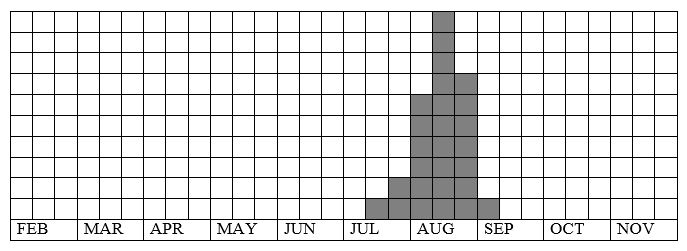
Fig. 11-2. Pyrgus alveus, habitat characteristics.
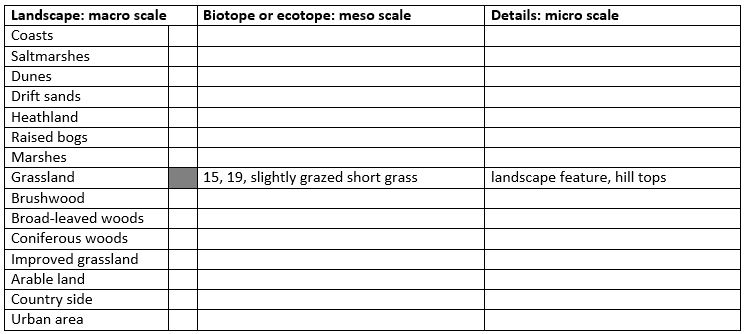
Fig. 11-3. Pyrgus alveus, climate matrix, heat-sums 400 - 900°d.

|










